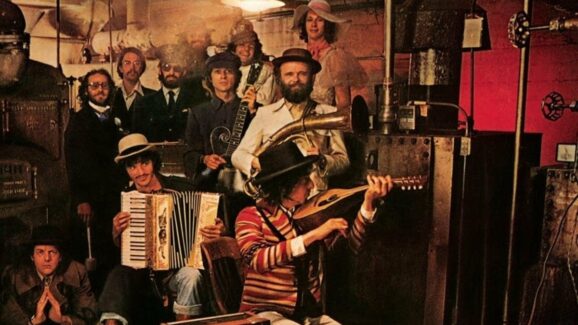Jerry Garcia must’ve been happy to just play music come fall of 1976. At least that would seem to be the case, judging from the seeming inexhaustible string of ideas he issues forth with his guitar (plus his strong, pliant vocals) during the approximately two and half hours of music on GarciaLive Volume 17.
Given the plethora of activities he had been involved in the previous three years, it’s only natural the inveterate road warrior would’ve had an appetite to perform live. While it’s true he had just taken a hiatus from touring with the Grateful Dead the previous year, that interim followed an inordinately busy period including the launch of the band’s own independent record label, the creation and implementation of the ‘Wall of Sound’ in 1974 and then the making of the Grateful Dead Movie based on Winterland performances late that same year.
Still, Jerry Garcia and company take a relaxed and patient playing approach on these northern California dates. They are comfortable in their element as they open with “Sugaree” and “They Love Each Other,” while the collective poise is exquisite within this reading of “Friend of the Devil,” the third composition here by the Garcia/(Robert) Hunter writing team. By the time Hank Ballard’s “Tore Up Over You” and the late NOLA icon Allen Toussaint’s “I’ll Take A Melody’ appear, the pinpoint precision of this musicianship is unmistakable, and GarciaLive Volume 17 has thus become a testament to natural chemistry and camaraderie.
The lineup includes both Godchaux, Keith, and Donna, plus the perpetual linchpin of the JGB throughout its history, bassist John Kahn, who maintains a rhythmic lock with drummer Ron Tutt. Erstwhile member of Elvis Presley’s band of the time, not to mention a notable participant in the mythic Legion of Mary, that vaunted session percussionist (who passed in October of ’21) first collaborated with Jerry on the 1974 solo album Compliments; whether or not intended as such, this three-CD set sounds like deserved homage to a skilled musician.
In rendering fourteen excerpts from a group repertoire in the process of crystallizing, the fivesome displays no little panache (albeit the most understated sort.) Not to disparage the rest of this lineup, but the key attributes of the ensemble are centered in the individual playing styles of the main instrumentalists: clear as it was from hearing the earliest official releases on Europe ’72 and Dick’s Picks #35, the contrast was delicious between Godchaux’ steady rolling piano work and the precision of Garcia’s electric guitar playing. And while the complementary nature of each man’s playing increased over the course of time regularly spent on stage in various contexts, the comparative simplicity of their partnership may never have been so invigorating as it sounds here during “Russian Lullaby.”
The generally familiar presence of all involved, however, is hardly a source of complacency. Rather, it’s a boon to the potent combination of economy and purpose. Not that any iteration of JGB was too busy for its own good, but with just one extra singer in tow—Donna is sweetly restrained on J.J. Cale’s “After Midnight”–plus a pianist who relied on the percussive qualities of the ivories, “How Sweet It Is (To Be Loved By You,” gains an intimacy that translates directly into the dignity permeating “The Way You Do The Things You Do.” While some of the vocal levels are slightly off on “Mystery Train,” the caveat on sound quality printed on the back cover here may or may not be absolutely necessary (except perhaps for inveterate audiophiles).
Further technical difficulties of greater magnitude preclude complete performances of these concerts. Otherwise, the customary high-quality of Betty Cantor-Jackson’s original recordings (mastered by Fred Kevorkian) mitigate the sonic shortfall at the source(s). Accordingly, it’s readily discernible that, like Garcia and Godchaux, Kahn and Tutt make use of all the space available to them. Yet they never overfill it: the comparatively stripped-down ensemble’s interplay during “Catfish John” for instance, constitutes a well-defined lesson in the concept of ‘less is more.’
Along those lines, longtime road crew member Steve Parish’s essay in the twelve-page booklet might well have been edited to exclude his overly-effusive play-by-play.. His writing is otherwise poignant and to the point and, as such, speaks volumes as it mirrors the music he otherwise strains to describe. Likewise, while the use of Jerry’s own artwork for the stylized yet evocative cover graphics might seem merely cosmetic, the changes in hue from a similar design on the previous vault exhumation is telling, indicative of the consistency of the GarciaLive content, even as takes more and different forms as Volume 17.












